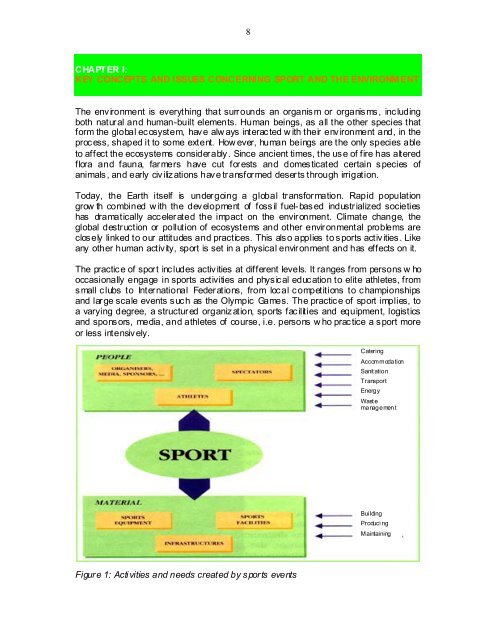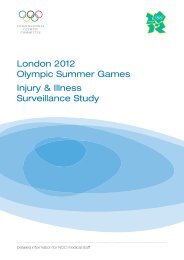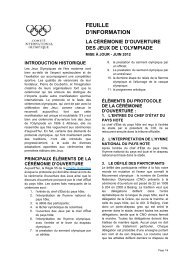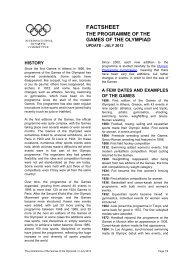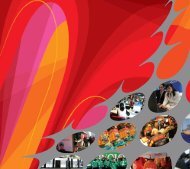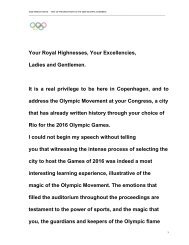MANUAL SPORT ENVIRONMENT
MANUAL SPORT ENVIRONMENT
MANUAL SPORT ENVIRONMENT
You also want an ePaper? Increase the reach of your titles
YUMPU automatically turns print PDFs into web optimized ePapers that Google loves.
8<br />
CHAPTER I:<br />
KEY CONCEPTS AND ISSUES CONCERNING <strong>SPORT</strong> AND THE ENVIRONM ENT<br />
The env ironment is everything that surrounds an organis m or organis ms , inc luding<br />
both natural and human-built elements. Human beings, as all the other species that<br />
form the global ecosystem, have always interacted with their environment and, in the<br />
proc ess, shaped it to some extent. How ever, human beings are the only species able<br />
to affect the ecosystems considerably. Since ancient times, the use of fire has altered<br />
flora and fauna, farmers have cut forests and domes ticated certain s pecies of<br />
animals , and early civ iliz ations hav e transformed deserts through irrigation.<br />
Today, the Earth itself is undergoing a global transformation. Rapid population<br />
grow th combined w ith the dev elopment of foss il fuel-bas ed industrialized societies<br />
has dramatically acc elerated the impact on the environment. Climate change, the<br />
global destruction or pollution of ecosystems and other environmental problems are<br />
clos ely linked to our attitudes and practices. This als o applies to s ports activ ities . Like<br />
any other human activ ity, sport is set in a physical environment and has effects on it.<br />
The practic e of sport inc ludes activ ities at different levels. It ranges from persons w ho<br />
occasionally engage in sports activities and phys ic al educ ation to elite athletes, from<br />
s mall c lubs to International Federations, from loc al c ompetitions to c hampionships<br />
and large scale events s uc h as the Olympic Games. The practic e of sport implies, to<br />
a varying degree, a structured organiz ation, sports fac ilities and equipment, logistics<br />
and spons ors, media, and athletes of course, i.e. persons w ho prac tice a s port more<br />
or less intensiv ely.<br />
Figure 1: Acti vities and needs created by s ports events<br />
Catering<br />
Accommodation<br />
Sanit ation<br />
Transport<br />
Energy<br />
Wast e<br />
management<br />
Building<br />
Produci ng<br />
Maintaining


